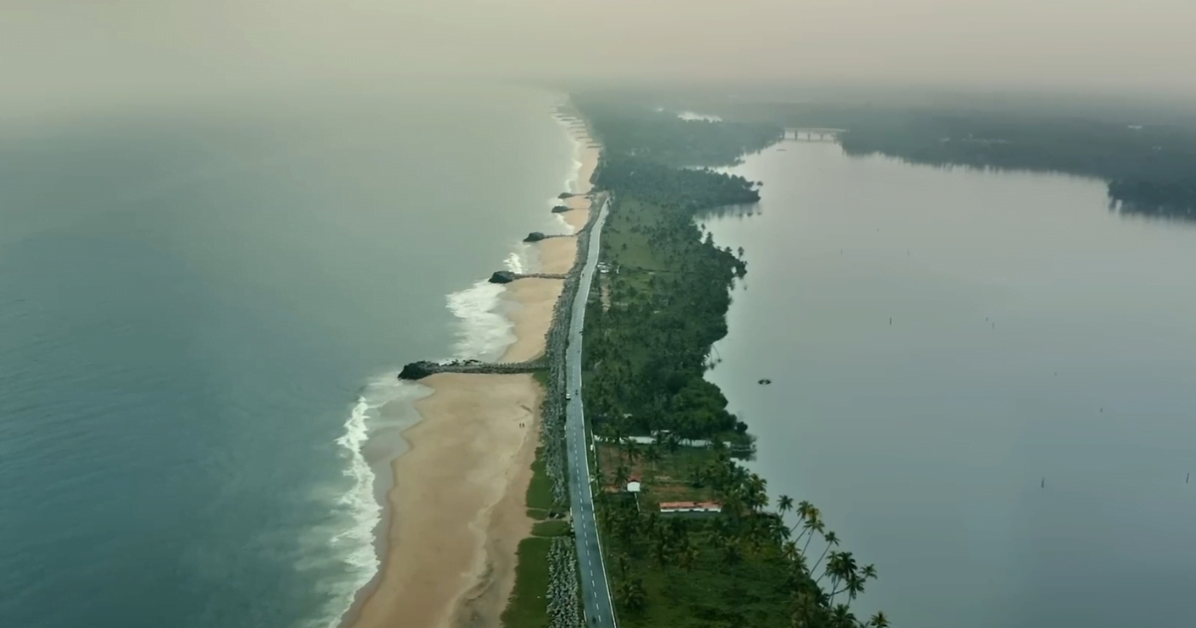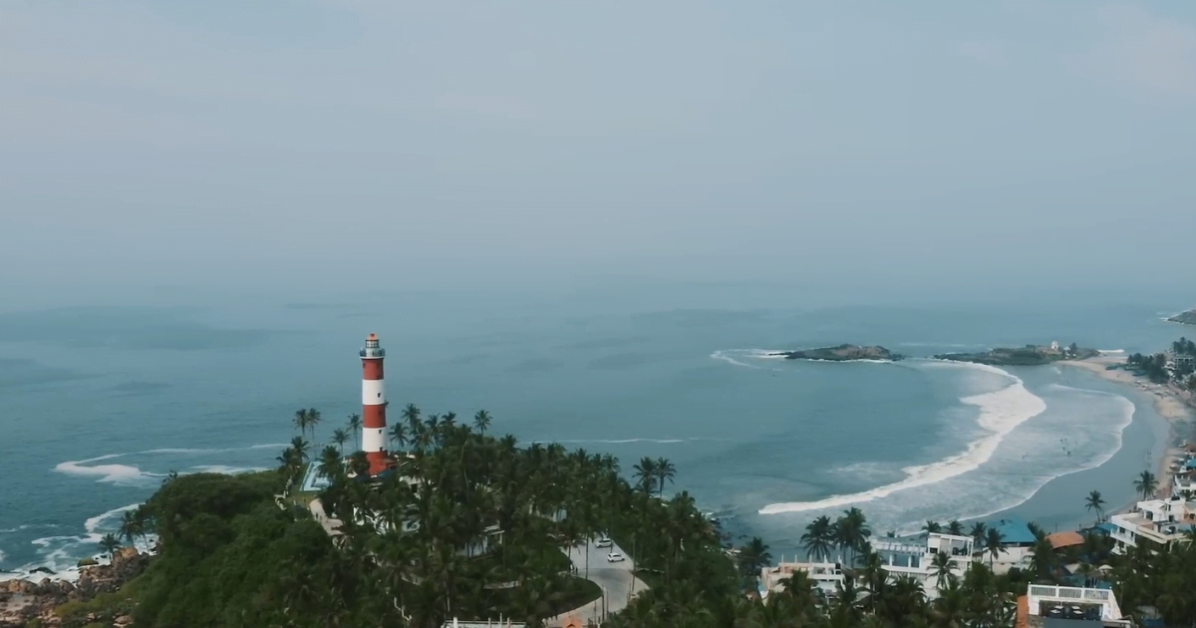India’s coastline boasts diverse, stunning beaches for every traveler. Spanning over 7,500 kilometers, it can be tough to pick the right one.
Do you prefer calm sunrises over the Bay of Bengal or lively sunsets by the Arabian Sea? Knowing the differences between the east and west coast beaches is key.
This helps you align your choice with your travel goals. To enjoy a memorable trip, know these coasts.
They provide diverse cultural options, rich in visual appeal, with eco-sensitivity.
How Does the Land Change the Beaches?

Geography molds the beaches on both coasts in distinct ways. Different geological forces influence the east, the Coromandel Coast, and the west, the Konkan Coast.
East Coast beaches expand, blending into the Bay of Bengal. For example, Marina Beach in Chennai is ideal for walks.
But it faces erosion and high tides, making swimming risky.
The flat terrain lacks dramatic cliffs or coves, offering open views.In contrast, the west coast has beaches in Goa and Kerala.
It has narrower shores backed by lush hills. The Arabian Sea, here, creates varied landscapes.
Rocks outcrops and cliffs form secluded areas. They improve sunset views and shield the beaches from strong tides.
This makes the waters calmer and safer for swimming.

How Does Climate Impact Your Beach Experience?
The east and west coasts have different climates. The east coast is warmer and more humid year-round.
It has a monsoon season from October to December. It brings heavy rains that can erode beaches and stir up waves.
In contrast, the West Coast has a more varied climate. From June to September, the southwest monsoon brings heavy rain.
But, from November to May, the weather is dry, cool, and clear. This is perfect for beach activities like swimming, sunbathing, and water sports.
For a beach vacation, the west coast has better weather outside the monsoon season.
But if you love the excitement of monsoons and nature’s power, the east coast is the better choice.

How Can You Get to the Beaches on Each Coast?
When planning your beach vacation, knowing the best routes and airports is key.
This helps you save time and avoid hassle. The East and West coasts are well-connected, but their logistics differ.
For the East Coast, such as Tamil Nadu or Andhra Pradesh, Chennai International Airport (MAA) is the key hub.
You can access Marina Beach, Mahabalipuram, or Pondicherry via road or rail.
Heading north? Use Visakhapatnam Airport (VTZ) for beaches like Rushikonda and Bheemunipatnam.
On the West Coast, the options are plentiful. Goa’s Dabolim Airport (GOI) is perfect for Goa’s beaches.
For Kerala, choose Cochin International Airport (COK) to reach Kovalam, Varkala, or Marari.
Heading to Maharashtra’s beaches like Alibaug or Ratnagiri? Start at Chhatrapati Shivaji Maharaj International Airport (BOM) in Mumbai.
Local transport varies, but buses, taxis, and trains are common. In Goa or Kerala, renting a car or bike is popular for exploring.

What Cultural Experiences Can You Expect?
India’s beaches offer more than sand and surf; they showcase rich cultures.
Each coast reflects its unique history and traditions, seen in architecture and festivals.
Dravidian culture exerts a profound impact on the east coast. Here, you’ll find the Shore Temple in Mahabalipuram, a UNESCO site.
It showcases Pallava dynasty art. Festivals like Tamil Nadu’s Pongal highlight agricultural traditions and devotion.
Meanwhile, the West Coast is a blend of cultures, shaped by trade and colonization. In Goa, the mix of Indian and Portuguese influences is evident.
People see this in old churches and vibrant festivals like Carnival. Kerala, with its backwaters and Kathakali dance, showcases its unique traditions.
So, when picking a coastal destination, think about the cultural experiences you want.
Are ancient temples and traditions your draw? Or is colonial history and multicultural vibrancy more appealing?

What Are the Best Activities on Each Coast?
Many travelers value activities as much as scenery. India’s east and west coasts cater to different tastes.
They offer everything from water sports to cultural tours. The East Coast has wide beaches.
They suit those who love long walks, beach volleyball, and sunrise photography.
Yet, its rough waters make swimming and snorkeling challenging. Here, exploring cultural and historical sites becomes a highlight.
In contrast, the West Coast’s calm waters invite swimming, snorkeling, and scuba diving.
Goa’s beaches have a lively nightlife and water sports. They include parasailing and jet skiing.
Kerala’s beaches offer a peaceful retreat. Enjoy Ayurvedic massages, yoga, and houseboat cruises.

How to Travel Sustainably on India’s Coasts?
More travelers want to reduce their environmental impact. So, sustainable travel is key. Coastal getaways can foster environmental stewardship while empowering nearby neighborhoods.
- East Coast:
- Support Local Businesses: Choose local places to stay and eat. This helps the economy and gives a more genuine experience. For example, stay in a guesthouse in Mahabalipuram. Or, eat at a Tamil Nadu restaurant to support locals.
- Cut Waste: Littering plagues East Coast beaches, especially in peak season. Bring reusable bags, bottles, and utensils. Join beach clean-ups to keep the coast clean.
- Respect Cultural Sites: Many East Coast beaches are near important cultural sites. Adopt humble attire and exhibit reverence, particularly in sacred surroundings.
- West Coast:
- Choose eco-friendly activities in Kerala’s backwaters, promoting soft travel practices. Paddle boats and kayaking are better than motorized sports for reducing pollution.
- Stay in Green Accommodations: Resorts in Goa and Kerala are going green. They use solar power and recycle. Staying in these places supports sustainable tourism.
- Protect Wildlife: The West Coast has diverse wildlife. Choose ethical operators who care for animals for wildlife viewing or water sports.

Why Should You Consider the Overall Vibe?
Cultural richness adds another layer to the beach experience in India. Both coasts have a unique, historic cultural heritage.
It influences everything, from architecture to local festivals.On the east coast, the influence of Dravidian culture is strong.
You’ll find ancient temples, like the Shore Temple in Mahabalipuram. It’s a UNESCO World Heritage site.
Its art and architecture reflect the glory of the Pallava dynasty. People celebrate festivals like Pongal in Tamil Nadu with great fervor.
They offer a glimpse into the region’s agricultural traditions and devotion.The West Coast, but, is a melting pot of cultures.
Centuries of trade and colonization shaped it. In Goa, Indian and Portuguese cultures blend.
You see this in old churches and in vibrant festivals, like Carnival. Kerala’s backwaters and Kathakali dances show its unique culture.
When choosing a coastal destination, consider the cultural experiences you want. Do you prefer the east’s ancient temples and rich traditions?
Or are you more interested in the west’s colonial history and multicultural vibrancy?

How Do You Choose the Right Coast for Your Beach Vacation?
What’s the difference between India’s east and west coast beaches? It boils down to personal preferences.
The west coast offers dramatic views, vibrant sunsets, and a lively scene. The east coast is about peaceful sunrises, rich culture, and quiet beaches.
Think about the beach experience you want. Interested in ancient temples and festivals?
Or are water sports and nightlife more your style? Answering these questions will help you pick the perfect beach in India.

Your Next Steps
Choosing between India’s east and west coasts is simple. First, understand their differences in geography, climate, culture, and activities.
Also, consider sustainable travel and logistics. This ensures a memorable beach vacation.
Eager to discover Indian beaches? Check our guide on rocky vs. sandy beaches. Planning your trip? Consider what you value most.
Whether it’s the calm of the east or the vibrancy of the west, India’s coasts cater to every traveler.
FAQS
East coast beaches are broader. They have sunrises and cultural sites. West coast beaches have dramatic landscapes, sunsets, and water sports.
The West Coast has more predictable weather, especially outside the monsoon season. So, it’s ideal for year-round beach activities.
The west coast is accessible via Goa’s Dabolim Airport (GOI) and Cochin (COK). The east coast via Chennai (MAA) and Visakhapatnam (VTZ).
The east coast has ancient temples and traditional festivals. The west coast has a mix of Indian and Portuguese cultures, with vibrant events.
Support local businesses. Cut waste. Choose eco-friendly pursuits, like paddling a kayak through nature. Select hotels that adhere to sustainable practices.
The west coast, particularly Goa, has a reputation for its nightlife and water sports, such as parasailing and scuba diving.
